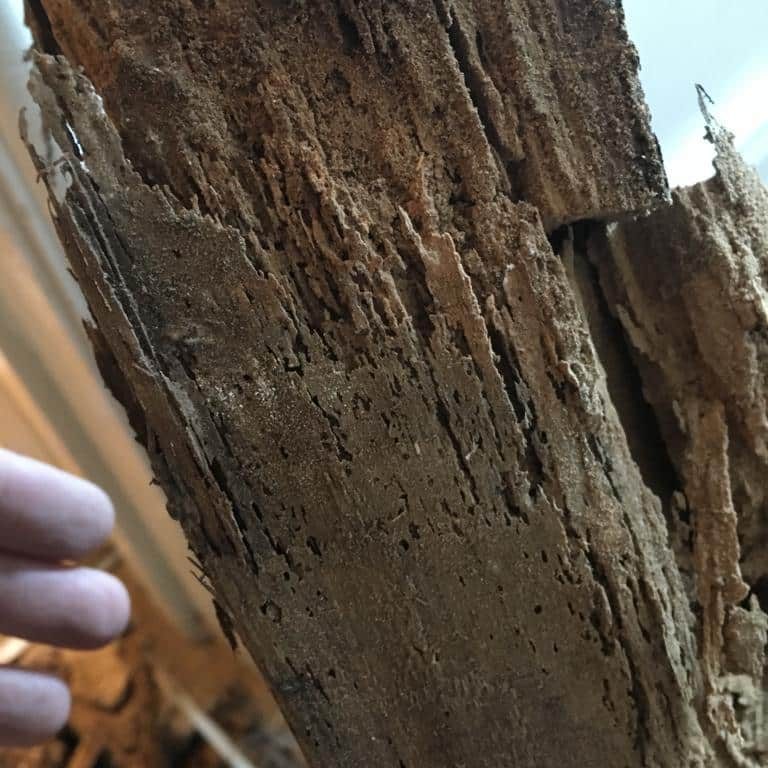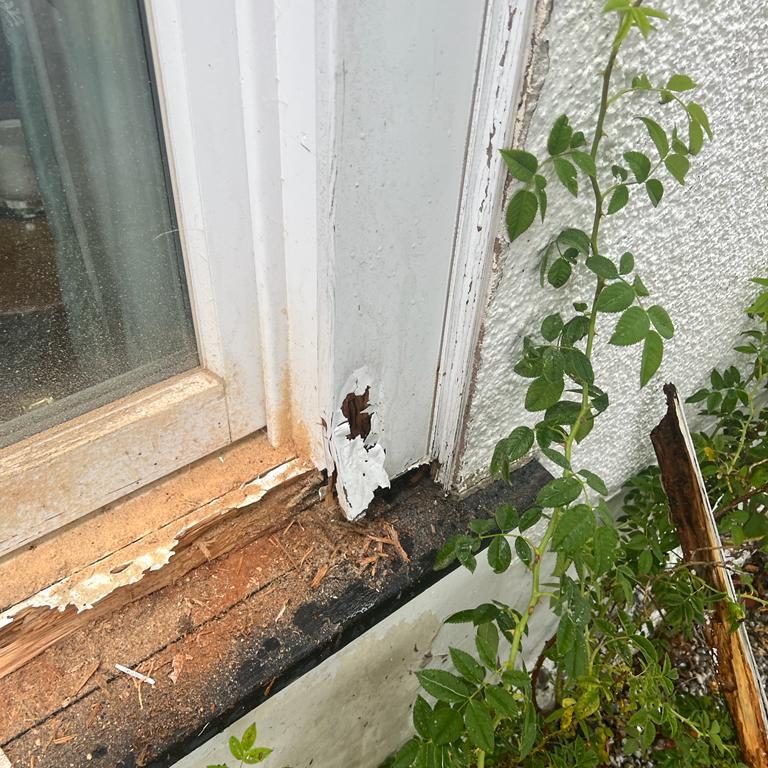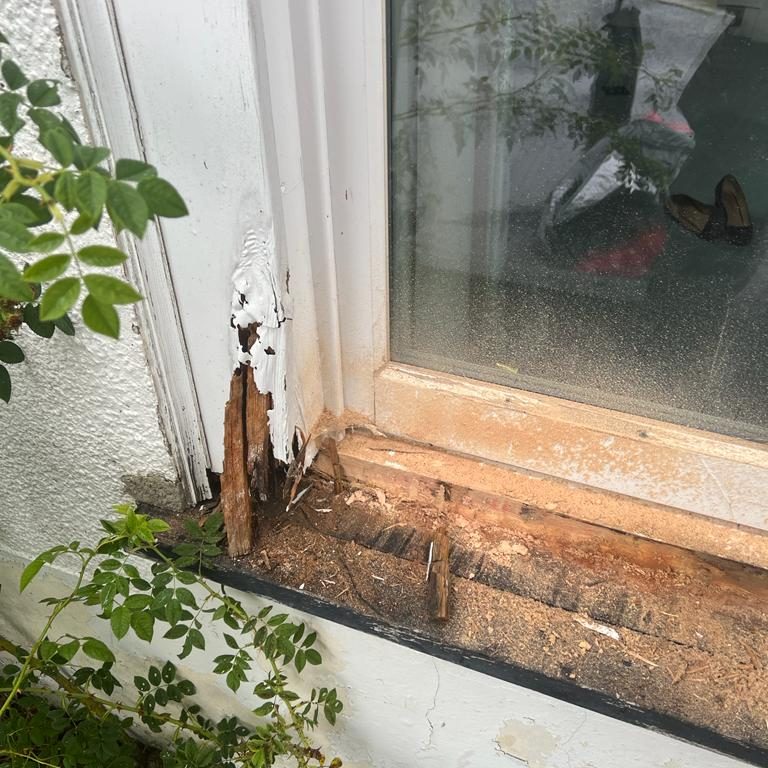Compared to dry rot, wet rot is less destructive as wet rot remains confined to the wet area only but still needs to be treated as it can affect a building’s structural integrity.
Wet Rot is a species of timber-eating fungus found in buildings that have unprotected timber components. There are many variations of the fungus but the most common type is Coniophora Puteana. Wet rot sustains itself by feeding on the moisture and nutrients from timber but can also cause decay in plaster, wallpaper and carpets. Wet rot spreads by systematically feeding on wood and then emitting spores into the atmosphere in the hope of landing on a fresh wet wood surface that it can feed on.
Wet Rot Types
Coniophora Puteana, often known as basement fungus, is the most prevalent fungal species and is referred to as wet rot in general. Wet rot generally comes in two major categories:
White rot
The deterioration that results when the wet rot fungus infects some types of wood might seem whiter. White rot is the term for this. When the fungus consumes lignin, a substance that holds the wood's cells together and lends it natural stiffness, white rot develops. White rot happens as the fungus breaks down lignin and cellulose, removing the deeper hues along the way. When handled, the wood has a soft, springy sensation as a result.
Brown rot
Brown rot takes on a darker appearance than white rot. It can look closely matched to the affected timber colour. Sometimes the wet rot fungus can’t digest the lignin in certain species of timber so it feeds on sugars and cellulose instead. This gives the affected wood a brown appearance.


Why do you have Wet Rot?
When excessive moisture is present in wood for a long time, wet rot develops. Wet wood is impacted by this sort of deterioration, which causes it to soften.
This timber absorbs moisture, which leads to wet rot. This moisture may come from a variety of places.
Timber that has been exposed to an internal or external moisture source will eventually develop wet rot. Timber construction components that are exposed are often covered, making them invisible.
Causes of wet rot include:
- Pipework leaks
- Overflowing or leaking gutters
- Roof issues
- Shower trays and bathing areas
- Dampness through walls
- Condensation
How to Identify Wet Rot
Identifying wet rot is not always easy because some of the symptoms of wet rot are similar to those of dry rot. Wet rot should be identified by a professional who can tell it apart from other forms of rot by the differing colour of the decayed timber as well as the size and type of cracking it exhibits as the wet rot progresses.
The common signs of wet rot include:
- Darkened timber – darker than surrounding timber
- Soft and spongy timber
- Cracked appearance that may crumble to touch when dry
- Localised fungus growth
- Shrinkage
- A damp, musty smell
if you have these symptoms contact CGT Carpentry today for the safest & most reliable Wet Rot treatments.

